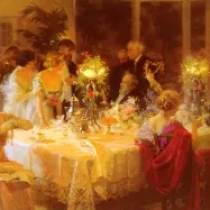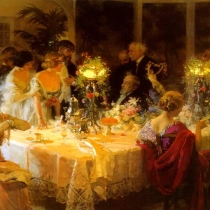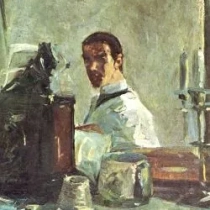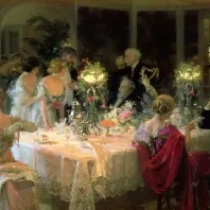 post-impressionism
post-impressionism
Description Jules Grun
Jules Grün, born on May 25, 1868, in Paris, wove the vibrant tapestry of Belle Époque Paris with his artistic brilliance, contributing a unique voice to the effervescent cultural milieu of late 19th and early 20th-century France. Grün, however, was not merely an observer of this golden era but a maestro who conducted the symphony of modernity with his distinctive palette and flair.
Embarking on his artistic journey, Grün initially found himself immersed in the burgeoning Parisian café culture, a vibrant realm that became the backdrop for his visual explorations. His keen eye and social acumen quickly transformed him into a fixture of Montmartre bohemian circles, a realm buzzing with creative energy and intellectual fervor.
Grün's oeuvre, characterized by its vivacious colors and dynamic compositions, became a celebration of Belle Époque joie de vivre. His illustrations and posters captured the spirit of the era, featuring fashionable women, theatrical scenes, and advertising imagery that resonated with the pulse of a city in the throes of transformation.
The artist's collaboration with the legendary cabaret Le Chat Noir became a cornerstone of his career. Grün's iconic posters, with their bold designs and vivid hues, not only contributed to the visual vocabulary of the burgeoning Art Nouveau movement but also served as visual anthems for the avant-garde spirit that defined the epoch.
Beyond the realm of commercial art, Grün's creativity found expression in more introspective and symbolic works. His exploration of allegorical themes hinted at a deeper layer beneath the surface, revealing a contemplative side to his artistic persona.
Grün's social circles included luminaries like Toulouse-Lautrec, Steinlen, and other central figures of the avant-garde. His involvement in artistic and literary salons underscored his multifaceted engagement with the cultural currents of the time.
As the Belle Époque gradually yielded to the seismic shifts of the 20th century, Grün's art faced challenges from emerging movements. Despite this, he continued to adapt, embracing new subjects and styles. Grün's later years saw a return to more classical themes, showcasing his ability to evolve while retaining his distinctive aesthetic.
Jules Grün passed away on February 15, 1938, leaving behind a legacy that captured the effervescence and dynamism of a bygone era. His ability to straddle the worlds of commercial and fine art, coupled with his keen insights into the zeitgeist of Paris, ensures his place as a distinctive figure in the tapestry of Belle Époque art, forever etched in the vibrant hues of a bygone era.







No Comments Yet...